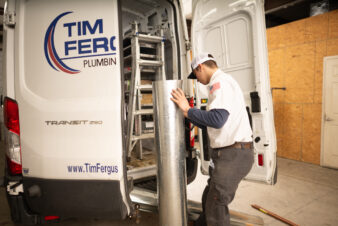New York — The Marcum Commercial Construction Index for the second quarter of 2019 reports construction spending slowing as the economy signals confusion and indecisiveness. Nonresidential construction spending declined 1.8 percent on a monthly basis in June but is up 2.3 percent year-over-year. Total nonresidential spending in June was $773.8 billion on a seasonally adjusted annual basis, as compared to $756.4 billion in June 2018.
The index is produced by Marcum’s National Construction Services group.
Eleven of the 16 nonresidential construction sectors expanded year-over-year, including lodging, office, health care, public safety, amusement and recreation, transportation, highway and street, sewage and waste disposal, water supply, conservation and development, and manufacturing. Sewage and waste disposal (18.7%) and manufacturing (9.9%), were the only sectors to register double-digit gains for the 12-month period.
Of the five sectors that contracted for the year, commercial construction registered the biggest decline (-10.7%), followed by educational, religious, communication, and power.
“Nonresidential construction outlays have failed to expand over the past year in real terms despite a surge in spending by state and local governments on a number of infrastructure categories,” wrote Anirban Basu, author of the report and Marcum’s chief construction economist.
Mr. Basu points to the pending insolvency of America’s Highway Trust Fund in 2021 as a key factor. “If history is any indication, the looming insolvency of the trust fund will induce a growing number of state and local transportation directors to delay needed infrastructure upgrades, removing one of nonresidential construction’s high growth segments in the process,” he writes.
Nonresidential construction employment added 122,300 net new jobs between July 2018 and July 2019, but lost 2,800 positions for the month. All but one of the 20 largest U.S. metropolitan areas benefited from the gains, with only Riverside-San Bernardino-Ontario, CA, showing a decline (-0.3%). The construction unemployment rate is currently 3.8%.
Against a generally positive economic backdrop, including record-low unemployment, Mr. Basu highlights weakening annual growth over the past decade, global political uncertainty, fluctuating U.S. trade policy, expanding debt, and the unknowns represented by the upcoming presidential election. “Given massive policy differences among contenders on issues ranging from taxes and social spending to regulating energy production or global trade, many economic actors will be predisposed towards embracing a wait-and-see attitude… None of this is especially promising with respect to the 12-to 18-month outlook for the U.S. economy, and where the economy heads, construction will follow.”
Marcum’s national construction leader, Joseph Natarelli, said, “Warning signs and historical trends of downturn are out there and have been for a little while. The construction industry, always the first to feel the pinch and last to be relieved of it, saw some minor downturns this June. Jobs are plenty, unemployment is slow, but nonresidential spending hasn’t grown over the past year and that includes the increases we saw in governmental and infrastructure spending. For now, we are advising our clients to take a skeptical and informed eye to the future.”
For the complete Marcum Commercial Construction Index, visit www.marcumllp.com/construction.



